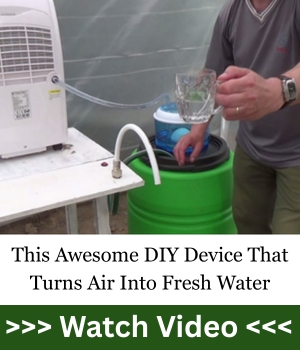For most preppers, surviving off‑grid evokes images of wood‑stove living, well water, and hand‑cranked radios. Chatbots—or small AI assistants—weren’t part of that vision. But today, as preppers stretch into tech, there’s a new frontier: chatbot-enabled survival, blending off‑grid resilience with digital smarts.
From AI mentorship in plant ID to emergency satellite comms, chatbots are moving off‑grid. They can optimize foraging, guide shelter building, or troubleshoot first‑aid—all without an internet connection. Let’s break down what this means, explore real tools, spotlight key players, and recommend best practices for integrating AI safely into your survival toolkit.
1. Why Chatbots Make Sense Off‑Grid
Instead of lugging manuals, you talk to a brain powered by thousands of documents. Ask: “What edible plants grow in Zone 4?” or “How much tarp for a lean‑to?” A well‑trained chatbot can answer in seconds. Chatbot trends show us that.
These chatbots can be trained specifically for your geographical location and survival priorities, providing context-aware advice even in obscure situations. For example, they can suggest alternative cooking methods if you’re out of firewood or walk you through creating a solar oven with just a few materials.
Having a reliable source of accurate, curated knowledge reduces cognitive stress during emergencies. In high-pressure environments where time and precision are critical, an on-demand, offline assistant can help you act swiftly without second-guessing.
Chatbots also serve a critical role in psychological resilience. When you’re alone in the wild—or worse, under stress with no one to talk to—an interactive chatbot can act as a companion of sorts. While it won’t replace real human interaction, it can help reduce the feeling of isolation, especially during long stretches of solitude.
Moreover, AI can help regulate routine. When you’re in survival mode, days blend together, and mental fog creeps in. A chatbot can provide reminders like “boil water,” “rotate food stores,” or “check perimeter.” These nudges aren’t just convenient—they enforce discipline, which is vital in high-stress, low-structure scenarios.
2. Key Technologies Powering AI Survival
Large–Language Models (LLMs) like LLaMA (Meta) or Optimus (EleutherAI) can run on rugged tablets or mini‑PCs. Flash them with survival manuals, botany guides, and first‑aid texts—and you have a local oracle.
These models are trained to understand human-like questions and provide coherent, context-aware answers. Their large datasets can be trimmed and focused to serve off-grid scenarios exclusively, removing irrelevant fluff and reducing system demands.
As open-source versions become lighter and more specialized, expect models designed just for field medics, bushcrafters, or homesteaders—each tailored to unique needs in different environments.
Another rising technology is solar-integrated smart kits designed for wilderness deployment. These kits come pre-installed with mini-Linux systems and LLMs, powered by foldable solar panels and equipped with offline GPS, mapping tools, and even drone interfaces.
Additionally, natural language processing (NLP) tools are becoming more culturally and linguistically adaptive. That means your AI assistant could eventually understand regional dialects, indigenous survival terms, or local idioms—making it easier to integrate with diverse survivalist communities worldwide.
 3. Current Real-World Tools & Players
3. Current Real-World Tools & Players
These tools aren’t future‑tech—they’re being built and used now by survivalists, scout leaders, and backcountry medics. Some of these platforms even integrate with drone reconnaissance, enabling bots to analyze terrain or spot water sources.
With innovations in real-time computer vision and chatbot logic trees, AI is becoming a multitool in the modern survivalist’s kit.
One noteworthy development is the rise of prepper-focused AI startups. These aren’t Silicon Valley giants but small operations building rugged AI gear for homesteaders, bush pilots, and maritime survivalists.
The open-hardware community is also pushing the edge. Think open-source survival bots running on $50 boards you can solder yourself. These DIY systems might not look sleek, but they’re highly customizable, secure, and affordable.
4. Best Practices for Survival Chatbots
Vet your knowledge base by mixing official guides with peer-reviewed sources. Back everything up with a printed manual.
Prioritize credibility and practical relevance. Government emergency protocols, peer-reviewed wilderness medicine texts, and indigenous foraging knowledge are all worth integrating.
Voice interfaces reduce dependency on visibility and dexterity. They allow fast command execution, especially when adrenaline is high and fine motor skills drop.
Another important habit is practicing redundancy in your AI training prompts. Build multiple ways to access critical information.
Finally, integrate your chatbot with daily survival routines. Have it deliver a daily summary: food rations left, weather forecast, battery levels, and top priorities.
5. Mix High/Low Tech
Never skip training with analog backup. A chatbot is a tool—not a savior. Always have paper charts, compass, and barricades ready.
Consider designing a “fail cascade.” That means every piece of tech in your kit—chatbot included—should have at least one analog backup.
It’s also worth keeping part of your knowledge completely tech-free. Practice survival meditation, pattern memory, and physical drills like knot-tying, field dressing, or trap building without any visual aid.
 6. Integrating Chatbots into Your Prepper Plan
6. Integrating Chatbots into Your Prepper Plan
Start with a basic model like CampAI on a rugged Android tablet with pre-loaded survival content.
Set up redundancy with solar chargers and manual interface options. This ensures usability even if parts of the voice system fail.
Add voice interface tied to emergency phrases like “patch wound” or “cook ration.”
Personalize it with your name, preferred terminology, and inventory context. Make your chatbot speak your language—literally.
Create seasonal update packs and have separate chatbot profiles for children, elders, and general use.
Lastly, test your setup during camping trips and drills to assess real-time utility and limitations.
Final Thoughts
As the world grows more unpredictable, survival is no longer just about fire-starting and shelter-building—it’s also about adapting to the tools of the future. Chatbots, once reserved for tech support and shopping carts, are rapidly becoming intelligent, customizable, and shockingly useful companions for the self-reliant individual.
From offline first aid walkthroughs to resource tracking and daily checklists, these digital assistants can serve as a backup brain when yours is overworked or overwhelmed. But like any good prepper will tell you: never put all your eggs in one basket. Your survival shouldn’t hinge on a screen or a battery. Use AI wisely—as a tool, not a crutch—and integrate it as one part of a layered, well-thought-out preparedness plan.
In the end, the best prepper is the one who stays ahead of the curve while keeping their feet firmly planted on the ground. And today, that curve includes a little artificial intelligence in your go-bag.
You may also like:
 The First Water Source That Will Disappear in a Crisis
The First Water Source That Will Disappear in a Crisis
You Probably Won’t Survive Off Grid Without This (Video)
11 Hacker Tips to Keep Your Phone From Tracking You





















